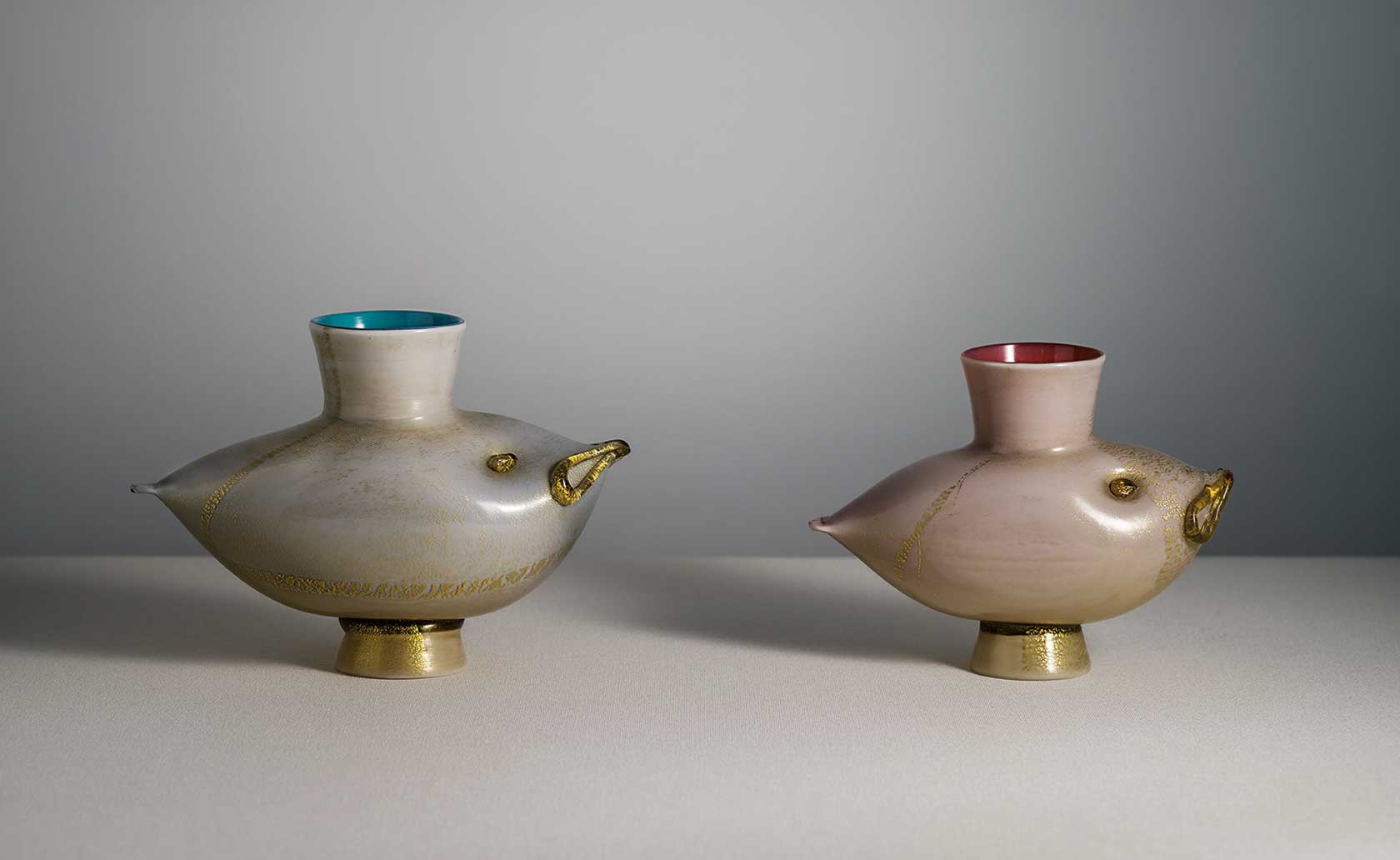
Le Stanze del Vetro / Exhibition Tomaso Buzzi at Venini

The Lombard architect Tomaso Buzzi was a leading exponent of the so-called Novecento Milanese. A friend and collaborator of Gio Ponti, he was also a member of the group called Il Labirinto, together with architects and entrepreneurs like Ponti, Michele Marelli and Paolo Venini. And it was with Ponti that Tomaso
Buzzi became one of the most important creators of Italian taste in the 1930s, setting the benchmark for the next few years. An erudite architect, experimental industrial designer and refined interior designer, as well as being a collaborator with the magazine Domus, his services were sought by some of the most important upper-class Italian families: the Volpi, Cini, and Visconti, to mention but a few.
The buildings he worked on include the Villa Necchi Campiglio, Milan, recently restored by the Fondo Ambiente Italiano (FAI), Palladio’s Villa Maser, Treviso, the Palazzo Cini at San Vio, the Palazzo Papadopoli and the Palazzo Labia (all Venice). From 1932 to 1933 Buzzi began to collaborate very actively with the Venini glassworks and was to continue to do so, albeit more sporadically, over the following few years. Buzzi’s creative contribution consisted in an experimental approach to form and materials. His extensive studies on lightning initiated the development of new forms in this traditional sector of Murano glassmaking. Curated by Marino Barovier, Tomaso Buzzi at Venini reconstructs this brief but fecund collaboration, documented not only through a selection of glass objects and original drawings from the Venini Archive but
also unpublished designs held at Scarzuola (Montegabbione), the “theatre-city”, which Buzzi began to construct in the late 1970s. To accompany the exhibition, the first catalogue raisonée of Tomaso Buzzi’s glass works, edited
